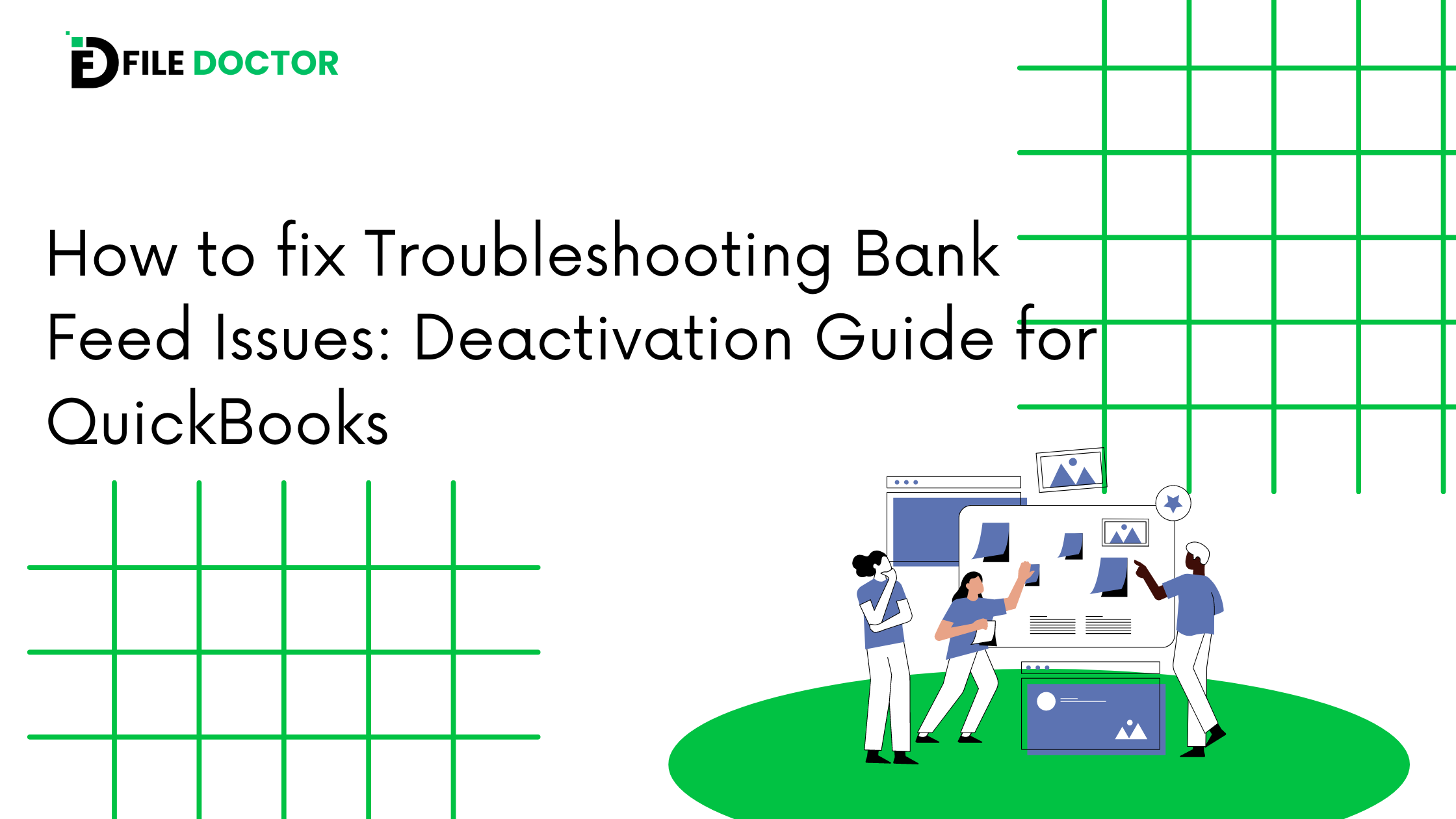Table of Contents
ToggleWhy Deactivate Bank Feeds?
Before diving into issues, let’s briefly discuss why you might need to deactivate bank feeds:
- Changing Banks: If you switch banks, you’ll need to deactivate feeds from the old bank and set up new feeds with the new bank.
- Correcting Errors: If the bank feed is set up incorrectly, deactivating and reactivating it might resolve setup issues.
- Account Closure: If a bank account is closed, its feeds should be deactivated to avoid errors in your QuickBooks.
Common Issues When Deactivating Bank Feeds
Here are some common issues that users face when deactivating bank feeds:
1. Transactions Not Syncing Properly
One common issue is that transactions may not sync correctly after deactivating bank feeds. This can happen if the feed was deactivated incorrectly or if there are pending transactions that were not imported before deactivation.
Solution:
- Manually Import Transactions: Before deactivating the bank feed, manually import any pending transactions from your bank into QuickBooks.
- Verify Transactions: Check your QuickBooks for any missing transactions and enter them manually if needed.
- Review Sync Settings: Ensure that your sync settings are correct after reactivating or setting up new feeds.
2. Duplicate Transactions
When you deactivate and then reactivate bank feeds, you might encounter duplicate transactions in QuickBooks. This can occur if transactions are imported again after reactivating the feed.
Solution:
- Review Transactions: Regularly review your transactions and look for duplicates.
- Merge Duplicates: Use QuickBooks’ feature to merge duplicate transactions if they appear.
- Adjust Import Settings: Check your import settings to ensure that duplicates are not imported again.
3. Inconsistent Account Balances
Deactivating bank feeds might cause inconsistencies in account balances. This can happen if the reconciliation process is interrupted or if transactions are missing.
Solution:
- Reconcile Accounts: Perform a reconciliation of your accounts to ensure that the balances match.
- Check for Missing Transactions: Verify that all transactions are accounted for and correct any discrepancies.
- Update Account Information: Make sure that your account information is up-to-date after deactivating and reactivating feeds.
4. Error Messages
You may encounter error messages when deactivating bank feeds. These messages can vary but typically indicate issues with the deactivation process.
Solution:
- Read the Error Message: Carefully read the error message to understand the problem.
- Follow Troubleshooting Steps: Follow any troubleshooting steps provided in the error message.
- Contact Support: If the error persists, contact QuickBooks Support for further assistance.
5. Bank Feed Not Updating
Sometimes, even after deactivating bank feeds, you might find that the feed does not update correctly. This issue can occur if there are problems with the bank’s connection or with QuickBooks settings.
Solution:
- Check Bank Connection: Verify that your bank connection is working and that there are no issues on the bank’s end.
- Update QuickBooks: Ensure that you are using the latest version of QuickBooks, as updates can fix connectivity issues.
- Reconfigure Bank Feed: Reconfigure the bank feed setup if necessary to ensure proper connection.
6. Problems with Multiple Accounts
If you have multiple accounts with bank feeds, deactivating one feed might affect other accounts. This can lead to issues with syncing and transaction management.
Solution:
- Check All Accounts: Review all accounts linked to bank feeds to ensure they are functioning correctly.
- Reconfigure Feeds: Adjust the settings for each account as needed after deactivating or reactivating feeds.
- Contact Support: If issues persist, contact QuickBooks Support for assistance with managing multiple bank feeds.
Steps to Properly Deactivate Bank Feeds
To minimize issues, follow these steps to properly deactivate bank feeds:
- Backup Your Data: Before making changes, backup your QuickBooks data to prevent any loss.
- Review Transactions: Ensure that all transactions are synced and accounted for.
- Deactivate Feeds:
- Open QuickBooks and go to the Banking menu.
- Select the account with the bank feed you want to deactivate.
- Click on Edit Account Info or Deactivate.
- Confirm Deactivation: Follow the prompts to confirm the deactivation.
- Reconcile Accounts: Perform a reconciliation to ensure that your account balances are accurate.
Tips to Avoid Issues When Deactivating Bank Feeds
- Regularly Reconcile Accounts: Regular reconciliation helps catch discrepancies early and ensures accurate records.
- Maintain Up-to-Date Software: Keep your QuickBooks software updated to avoid compatibility issues.
- Document Changes: Keep records of any changes made to bank feeds for future reference.
- Seek Professional Help: Consult with a QuickBooks professional if you encounter complex issues.
Conclusion
Deactivating bank feeds in QuickBooks can lead to several issues, but understanding these potential problems and following the proper procedures can help you navigate the process smoothly. By being proactive and using the solutions provided, you can ensure that your financial records remain accurate and up-to-date. If you encounter persistent issues, don’t hesitate to seek help from QuickBooks Support or a financial professional. Proper management of bank feeds is crucial for maintaining the integrity of your financial data and ensuring smooth business operations.







